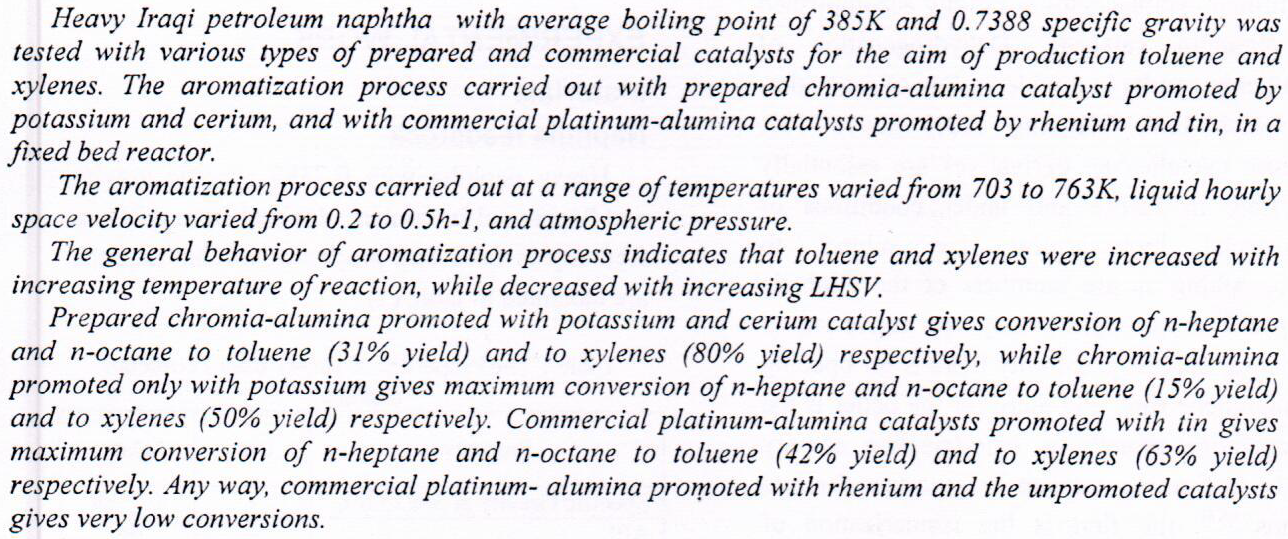
The analysis and efficiency of phenol extraction from the industrial water using different solvents, were investigated. To our knowledge, the experimental information available in the literature for liquid-liquid equilibria of ternary mixtures containing the pair phenol-water is limited. Therefore the purpose of the present investigation is to generate the data for the water-phenol with different solvents to aid the correlation of liquid-liquid equilibria, including phase diagrams, distribution coefficients of phenol, tie-lines data and selectivity of the solvents for the aqueous phenol system.
The ternary equilibrium diagrams and tie-lines
... Show MoreLinear and mass attenuation coefficient of reactive powder concrete (RPC) sample ( of compressive strength equal to 70 Mpa) using beta particles and gamma ray with different energies have been calculated as a function of the absorber thickness and energy. The attenuation coefficient were obtained using NaI(Tl) energy selective scintillation counter with 90Sr/90Y beta source having an energy rang from (0.546-2.274) MeV and gamma ray energies (0.569, 0.662, 1.063, 1.17 and 1.33) MeV . The attenuation coefficient usually depends upon the energy of radiations and nature of the material. The result represented in graphical forms. Exponential decay was observed. It is found that the capability of reactive powder concrete to absorber beta particle
... Show More (6)
(6)
 (8)
(8)
 (9)
(9)
Promoting the production of industrially important aromatic chloroamines over transition-metal nitrides catalysts has emerged as a prominent theme in catalysis. This contribution provides an insight into the reduction mechanism of p-chloronitrobenzene (p-CNB) to p-chloroaniline (p-CAN) over the γ-Mo2N(111) surface by means of density functional theory calculations. The adsorption energies of various molecularly adsorbed modes of p-CNB were computed. Our findings display that, p-CNB prefers to be adsorbed over two distinct adsorption sites, namely, Mo-hollow face-centered cubic (fcc) and N-hollow hexagonal close-packed (hcp) sites with adsorption energies of −32.1 and −38.5 kcal/mol, respectively. We establish that the activation of nit
... Show MoreThis work deals with preparation of Sulfated Zirconia catalyst (SZ) for isomerization of n-hexane model and refinery light naphtha, as well as enhanced the role of promoters to get the target with the mild condition, stability, and to prevent formation of coke precursors on strong acidic sites of the catalyst. The prepared SZ catalysts were characterization by fourier transform infrared spectroscopy (FTIR), X-ray diffraction (XRD), Brunauer –Emmett-Teller (BET) surface area analysis, Thermogravimetric Analysis (TGA), Scanning Electron Microscope (SEM) and atomic force microscopy (AFM) Analyzer. The results illustrate that the maximum conversion and selectivity for n-hexane isomerization with Ni-WSZ and operating temperature of 150 °C
... Show More (2)
(2)
In all process industries, the process variables like flow, pressure, level, concentration
and temperature are the main parameters that need to be controlled in both set point
and load changes.
A control system of propylene glycol production in a non isothermal (CSTR) was
developed in this work where the dynamic and control system based on basic mass
and energy balance were carried out.
Inlet concentration and temperature are the two disturbances, while the inlet
volumetric flow rate and the coolant temperature are the two manipulations. The
objective is to maintain constant temperature and concentration within the CSTR.
A dynamic model for non isothermal CSTR is described by a first order plus dead
time (FO

